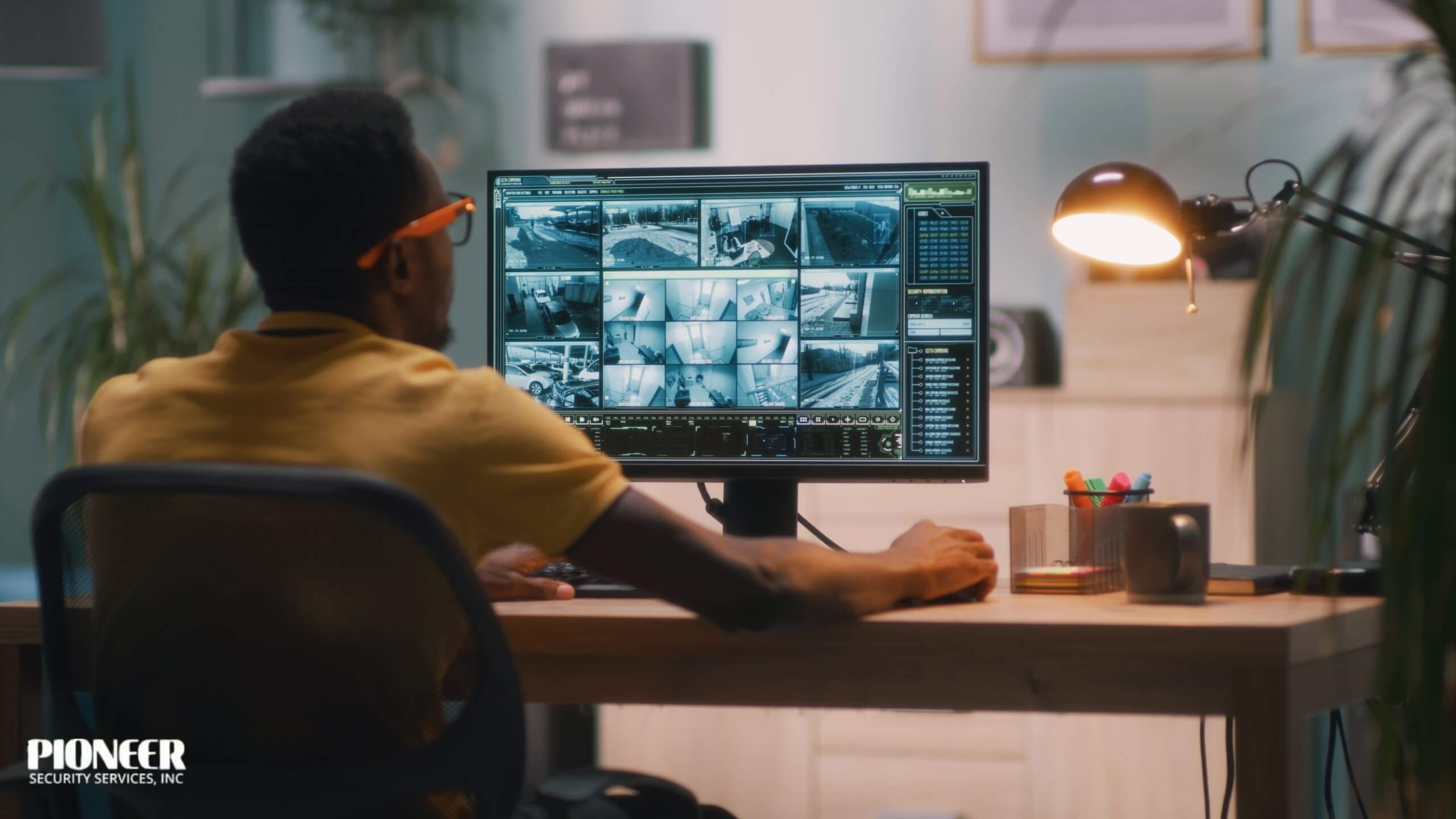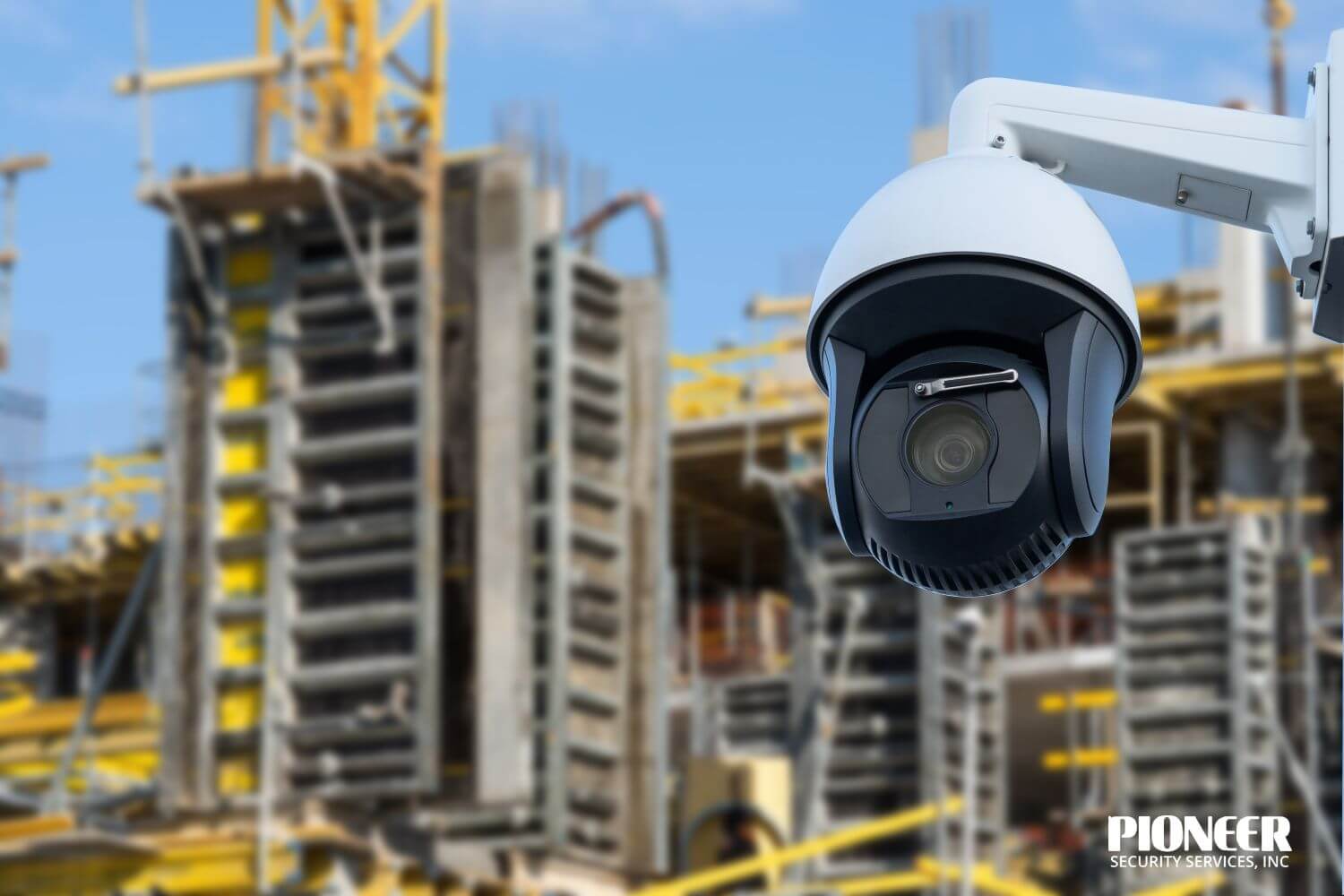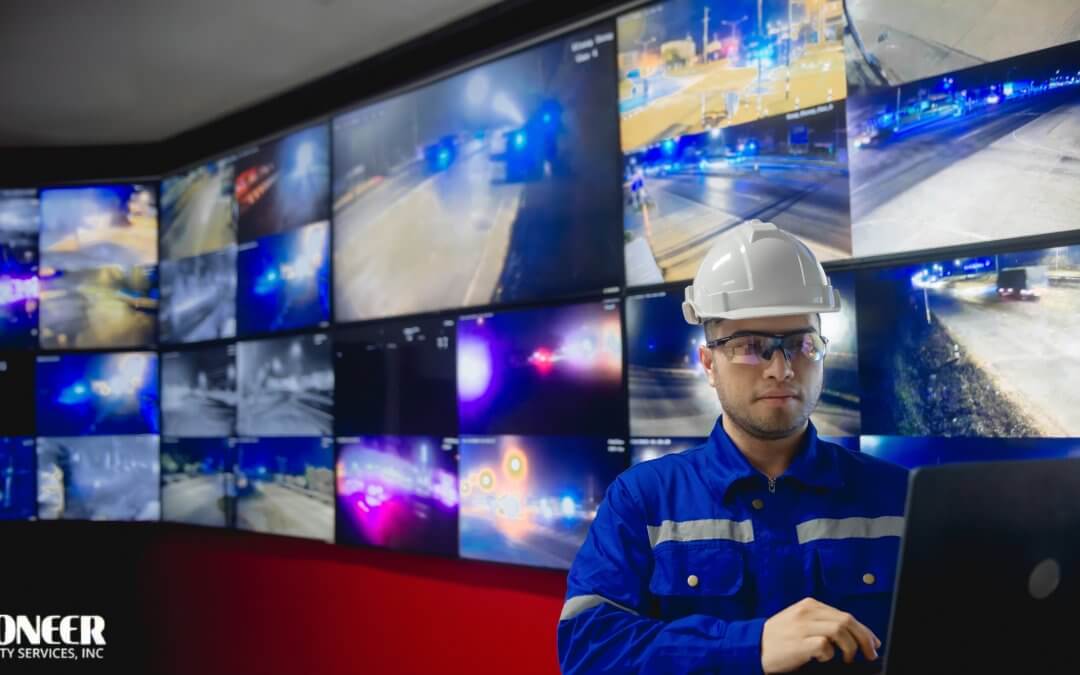Securing remote and unmanned sites presents unique challenges due to their isolation and lack of on-site personnel. Traditional security measures often fall short in these environments, making it essential to explore alternative solutions.
According to the National Institute of Standards and Technology (NIST) Cybersecurity Framework, organizations responsible for critical systems must implement continuous monitoring and real-time detection measures to maintain resilience and respond promptly to emerging threats.
This guide explains live video monitoring for remote and unmanned sites, covering its benefits, implementation strategies, and real-world applications. You’ll gain a comprehensive understanding of how this technology can enhance the security of your assets.
What Is Live Video Monitoring and How Does It Work
Live video monitoring involves the real-time observation of remote or unmanned sites using security cameras connected to a central monitoring system. This technology enables security personnel to oversee multiple locations simultaneously, providing continuous surveillance without the need for on-site staff. It’s particularly beneficial for sites such as construction zones, utility stations, and isolated infrastructure, where traditional security measures may be insufficient.
These are the key features that work together to provide comprehensive protection and ensure that every aspect of the site is secure.
24/7 Surveillance for Continuous Protection
Live video monitoring provides constant oversight of remote and unmanned sites, ensuring that every moment is observed for potential threats.
- Continuous monitoring of all critical areas
- Early detection of security breaches or suspicious activity
- Rapid response to incidents during off-hours
- Immediate identification of unusual behavior to prevent escalation
This round-the-clock surveillance enhances site security, reduces risks, and ensures timely intervention when incidents occur.
Real-Time Alerts and Notifications
Security teams gain immediate awareness of unusual activity through live video monitoring, allowing them to act without delay.
- Instant alerts sent directly to security personnel
- Swift response to potential incidents
- Minimizes potential damage or loss
- Ensures teams can act quickly to emerging threats
By providing timely notifications, these systems help maintain a safer environment and reduce the impact of security incidents.
High-Definition Cameras for Clear Evidence
Utilizing high-definition cameras ensures that video footage is clear and detailed, essential for identifying individuals and activities. High-resolution images can be pivotal in investigations and legal proceedings. The Security Industry Association also highlights that high-definition cameras improve the quality of surveillance footage, aiding in accurate identification and evidence collection.
Remote Access Across Devices: Mobile, Desktop, and Control Centers
Live video monitoring systems allow authorized personnel to access surveillance feeds from various devices, including smartphones, desktops, and centralized control centers. This flexibility enables security teams to monitor sites virtually anywhere, enhancing responsiveness and oversight. Remote access allows security personnel to respond quickly to incidents and maintain continuous supervision without being physically present on site.
Integration with Alarm Systems and IoT Devices
Integrating video monitoring systems with alarm systems and Internet of Things (IoT) devices creates a comprehensive security network. This integration allows for automated responses to detected threats, such as triggering alarms or locking doors, enhancing overall security. Connecting multiple systems ensures that unusual activities are addressed quickly, reducing the risk of damage, theft, or operational disruptions.
AI Analytics: Motion Detection, Facial Recognition, and Behavior Alerts
Artificial Intelligence (AI) enhances video monitoring by enabling systems to analyze footage for specific behaviors, such as unauthorized access or unusual movements. AI-powered analytics can also include facial recognition, aiding in identifying individuals. These analytics help security teams detect potential threats more efficiently and reduce false alarms, allowing faster and more accurate response to incidents.
Why Live Video Monitoring Is Essential for Remote and Unmanned Sites
Remote and unmanned sites face unique security challenges that traditional measures cannot always address. Limited access, geographic isolation, and lack of on-site personnel make these locations more vulnerable to theft, vandalism, and operational disruptions.
Here’s why specialized solutions like live video monitoring are essential for remote security.
Security Challenges in Remote and Hard-to-Reach Locations
Remote sites face limited access, harsh environments, poor lighting, and difficult terrain, which make on-site security challenging. These conditions increase the vulnerability of assets and equipment. Live video monitoring provides consistent oversight, enabling rapid detection of unusual activity and ensuring that security teams can respond effectively even when personnel cannot be physically present.
Risks of Theft, Vandalism, and Operational Downtime at Unattended Sites
Unattended facilities are more prone to theft, vandalism, and operational disruptions. Without on-site staff, equipment, materials, and infrastructure can be targeted, and technical issues may go unnoticed. Continuous live video monitoring helps detect incidents immediately, preventing losses, minimizing downtime, and ensuring that operations remain secure and uninterrupted at remote or unmanned locations.
The High Cost of Not Monitoring Remote Sites
Failing to monitor remote sites can lead to equipment damage, theft, operational delays, and regulatory compliance issues. Small problems may escalate into costly incidents, affecting business continuity. Implementing live video monitoring reduces these risks by providing constant oversight, safeguarding assets, and ensuring smooth operations at facilities with limited human supervision.
How does live video monitoring work in sites without internet or electricity?
Sites without internet or electricity can utilize solar-powered cameras with local storage, ensuring continuous surveillance and recording without relying on external power sources.

Benefits of Live Video Monitoring for Remote Sites
Live video monitoring offers significant advantages for organizations managing remote and unmanned sites. Beyond basic surveillance, it strengthens security operations, reduces costs, and supports compliance and legal requirements. Understanding these benefits helps organizations see the value of investing in a system that protects assets and ensures operational continuity.
These are the benefits that show why live video monitoring is increasingly adopted across industries with remote operations.
Prevent Theft and Vandalism Before It Happens
Live video monitoring deters potential criminals by providing visible cameras and real-time observation. Continuous tracking helps detect unusual activity quickly, reducing the risk of theft or vandalism. This proactive approach protects valuable equipment and infrastructure, ensuring that remote sites remain secure even when no personnel are physically present.
Reduce Security Costs by Minimizing On-Site Personnel
Remote video monitoring allows organizations to cut costs by reducing the need for guards at every site. Security teams can oversee multiple locations from a central control center, responding to incidents without being on-site. This provides effective protection while freeing up resources for other operational needs.
Operational Oversight and Faster Issue Detection
Live video feeds give teams real-time insight into site operations, enabling quick identification of issues such as unauthorized access or equipment problems. Immediate detection allows for faster response, preventing minor issues from escalating and ensuring smooth, uninterrupted operations at remote and unmanned locations.
Insurance, Compliance, and Legal Advantages
Video monitoring supports regulatory compliance and helps meet safety requirements. Insurers often see Monitored sites as lower risk, potentially reducing premiums. Recorded footage provides documentation for audits or legal matters, protecting organizations from liability and helping them demonstrate adherence to safety and security standards.
Evidence Collection for Investigations and Claims
Recorded video provides reliable evidence for investigations, insurance claims, or legal proceedings. Clear footage helps identify individuals and verify incidents, supporting accountability and faster resolution of disputes. Having documented evidence ensures organizations can respond confidently and efficiently when addressing operational or legal issues.
How can live monitoring help during natural disasters?
Live monitoring during natural disasters enables real-time assessment of affected areas, facilitating swift response, resource allocation, and documentation for recovery efforts.
How Technology and Connectivity Improve Remote Video Monitoring
Effective remote video monitoring relies on robust technology and reliable connectivity. The right systems ensure continuous surveillance, fast response times, and secure data handling. U.S. National Institute of Standards and Technology (NIST) highlights IP-based, real-time surveillance systems as key enablers of operational visibility and resilience in critical applications.
To enhance overall security and operational efficiency at remote and unmanned locations, it is critical to select the right connectivity options, maintain low-latency video streams, protect data, and ensure the solution can scale across multiple sites.
Here’s how proper technology and reliable connectivity keep remote monitoring systems effective, responsive, and secure.
Choosing Between Internet, Cellular, and Satellite Connectivity
Remote video monitoring can use internet, cellular, or satellite connections depending on site location and infrastructure. Internet is ideal for sites with stable networks, cellular works for areas with mobile coverage, and satellite is best for off-grid locations. Selecting the right connectivity ensures continuous video feeds and reliable monitoring, even in areas where traditional networks are unavailable or unreliable.
Ensuring Low-Latency Video for Real-Time Response
Low-latency video streams allow security teams to respond instantly to incidents. High latency can delay detection and reduce the effectiveness of monitoring. Using optimized network infrastructure, high-speed connections, and proper video compression techniques ensures that live feeds are smooth and real-time, enabling fast decision-making and rapid response at remote or unmanned sites.
Secure Video Transfer and Data Encryption
Protecting video data during transmission is crucial to prevent unauthorized access or tampering. Remote monitoring systems use encryption and secure protocols to safeguard video feeds. Ensuring secure video transfer maintains privacy, protects sensitive information, and prevents potential security breaches, giving organizations confidence that their remote operations remain protected.
Scalable Solutions for Multiple Sites
Scalable monitoring solutions allow organizations to manage multiple remote sites from a centralized system. Adding new cameras or locations is straightforward without compromising performance. Scalable systems improve efficiency, reduce management complexity, and provide consistent security coverage across all facilities, making it easier to expand operations without compromising safety or oversight.
Implementation Considerations for Effective Remote Monitoring
Implementing live video monitoring at remote or unmanned sites requires careful planning. Proper assessment, reliable power sources, rugged equipment, and compliance with legal and privacy regulations are critical for ensuring continuous, effective surveillance.
Below are the factors that are important to address during setup to ensure that the system performs reliably, protects assets, and meets operational and regulatory requirements.
Conducting a Site Assessment for Optimal Camera Placement
A site assessment helps determine the best locations for cameras, ensuring full coverage of critical areas. Factors such as terrain, access points, lighting, and blind spots are considered. Proper placement maximizes visibility, reduces the risk of blind spots, and allows security teams to respond quickly to incidents while making the most efficient use of monitoring equipment.
Power Solutions: Solar, Battery Backup, and Hybrid Systems
Remote sites may lack consistent power, making reliable energy sources essential. Solar panels, battery backups, and hybrid systems ensure continuous operation even during outages. Choosing the right power solution guarantees uninterrupted surveillance, reduces maintenance requirements, and keeps cameras and monitoring systems functional in off-grid or challenging locations.
Choosing Weatherproof and Rugged Equipment for Harsh Environments
Remote sites often face extreme weather, dust, or physical challenges. Selecting weatherproof and rugged cameras and equipment ensures durability and reliable performance. These devices withstand environmental stress while maintaining image quality and system functionality, reducing downtime and maintenance costs for organizations managing unmanned or harsh locations.
Legal and Privacy Compliance: Recording Regulations and Data Handling
Monitoring systems must comply with local laws regarding video recording and data storage. Understanding recording regulations, retention periods, and privacy requirements ensures legal compliance. Secure handling of recorded data protects sensitive information and minimizes liability, while maintaining transparency and accountability in remote video monitoring operations.

Industry Use Cases for Remote and Unmanned Site Monitoring
Live video monitoring is used across multiple industries to protect assets, maintain operations, and ensure safety at remote or unmanned sites. Its versatility allows organizations to monitor construction projects, energy facilities, warehouses, and off-grid locations, providing oversight where on-site personnel may not always be present.
Here are the use cases that help organizations to apply monitoring effectively to meet security and operational needs.
Construction Sites: Protect Equipment and Monitor Operations
Construction sites are prime targets for theft and vandalism because they house valuable equipment and materials. In the U.S., the National Equipment Register estimates that between $300 million to $1 billion worth of construction equipment is stolen annually, not including tools and building materials. Moreover, contractors report an average annual loss exceeding $10,000 per firm due to theft and vandalism. Implementing live video monitoring can significantly mitigate these risks by providing real-time surveillance, deterring unauthorized access, and enabling immediate response to suspicious activities
Utilities and Energy Facilities: Remote Oversight of Critical Assets
Utilities and energy sites, such as power plants and substations, require continuous monitoring to protect critical infrastructure. Live video systems provide oversight of equipment, access points, and operations without the need for constant on-site staff. This enables faster detection of security breaches or operational issues, helping maintain reliability and safety at facilities that are often spread across large, isolated areas.
Telecom Towers and Warehouses: Security in Unmanned Locations
Telecommunication towers and warehouses are frequently unmanned or visited infrequently, making them vulnerable to theft or unauthorized access. Video monitoring enables security teams to remotely oversee these locations, monitor deliveries and maintenance activities, and detect potential threats in real time. Continuous observation ensures assets are protected and operations continue smoothly without constant on-site supervision.
Extreme or Off-Grid Locations: Wildlife, Environmental, and Fire Monitoring
Remote or off-grid locations, such as forests, wildlife reserves, and isolated industrial sites, face unique risks including wildfires, poaching, and environmental hazards. In the U.S., the National
The Interagency Fire Center reports that an average of 65,000 wildfires occur annually, burning more than 7 million acres of land. Live video monitoring helps track environmental conditions, detect fire hazards early, and monitor wildlife activity. m70,000 wildfires occur annually. Remote access allows organizations to gather real-time data and respond quickly to emergencies, even in areas that are dangerous or difficult for personnel to reach regularly.
Strengthen Your Security with Reliable Live Video Monitoring
Live video monitoring has become an essential solution for securing remote and unmanned sites. By combining continuous surveillance, real-time alerts, high-definition cameras, and advanced AI analytics, organizations can protect valuable assets, reduce operational risks, and maintain smooth, uninterrupted operations. As this guide has shown, implementing these systems is crucial for timely threat detection, minimizing loss, and strengthening overall security.
It’s important to choose the right partner to implement this technology. For organizations seeking reliable and professional security solutions, Pioneer Security Services offers expert live video monitoring services for remote and unmanned sites. Our advanced systems, backed by experienced personnel, provide 24/7 protection, rapid response, and comprehensive oversight.
Frequently Asked Questions
Can remote video monitoring be integrated with existing security systems?
Yes, remote video monitoring can integrate with existing security systems, enhancing real-time surveillance and response capabilities without requiring a complete system overhaul.
What types of cameras are best for extreme weather conditions?
Cameras designed for extreme weather conditions feature weatherproof enclosures, temperature-resistant components, and IP-rated housings to ensure reliable operation in harsh environments.
How often should cameras and equipment be maintained or upgraded?
Regular maintenance schedules vary; however, outdoor cameras typically require inspection every three months, while indoor systems may need attention twice yearly to ensure optimal performance.
Can multiple sites be monitored from a single platform?
Yes, centralized monitoring platforms allow security personnel to oversee multiple sites simultaneously, streamlining operations and enhancing response efficiency across locations.
How quickly can security personnel respond to alerts?
Response times vary based on system integration and personnel availability; however, advanced systems can facilitate rapid response, often within minutes, to mitigate potential threats.



